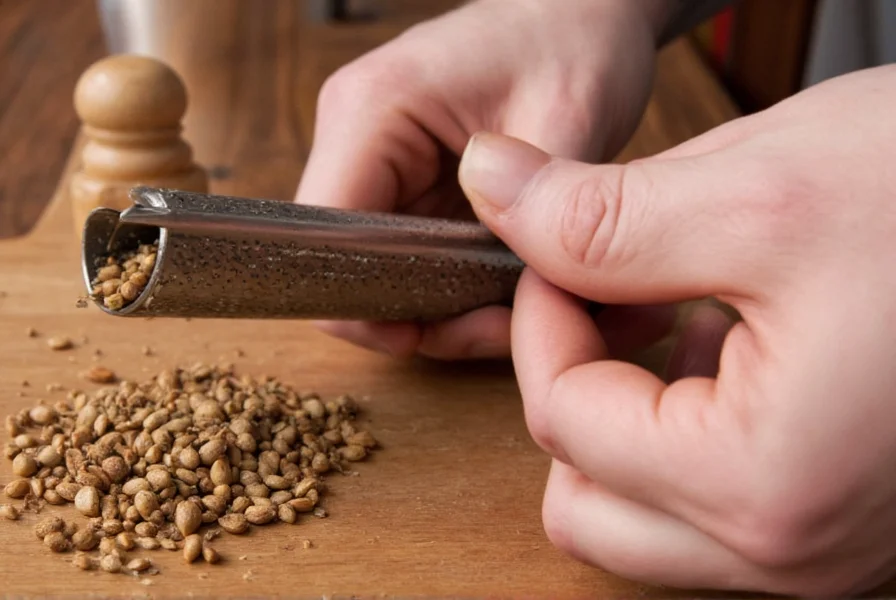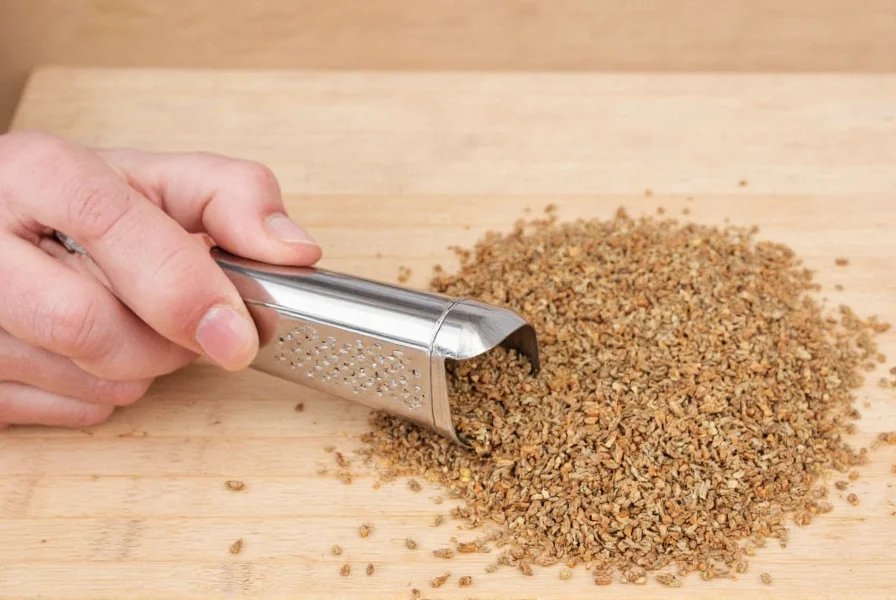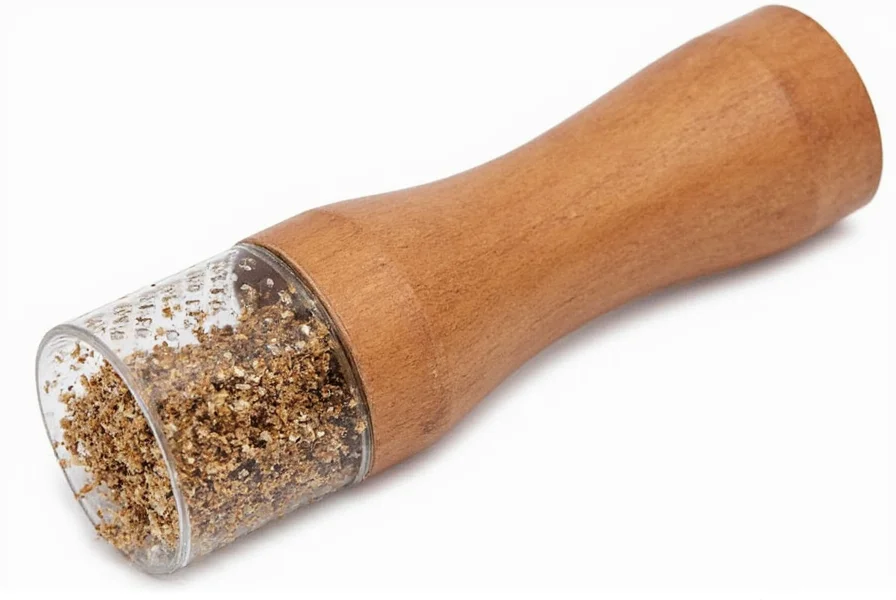When you're working with whole nutmeg, having the right grating tool makes all the difference in your culinary creations. Freshly grated nutmeg offers a complex, warm flavor profile that bottled ground versions simply can't match. The essential oils responsible for nutmeg's distinctive taste evaporate quickly after grinding, which is why professional chefs and serious home cooks always reach for a dedicated nutmeg grater when precision seasoning matters.
Why Nutmeg Requires a Specialized Grater
Nutmeg seeds are exceptionally hard and dense compared to other spices, requiring a grater with specific characteristics. Standard box graters or zesters often struggle with whole nutmeg, resulting in uneven grating, wasted spice, or even injury from slipping. A proper nutmeg grater features:
- Tiny, razor-sharp perforations (typically 0.5-1mm in diameter)
- Secure seed-holding mechanism
- Compact size for precise control
- Durable construction to handle hard seeds
The small holes create fine particles that dissolve perfectly into sauces, batters, and beverages. Larger holes found on standard graters produce coarse shavings that don't incorporate well and lose flavor rapidly. This is why understanding how to use a nutmeg grater properly transforms your cooking experience.
Types of Nutmeg Graters Compared
| Type | Best For | Grating Quality | Maintenance | Price Range |
|---|---|---|---|---|
| Traditional Box Grater | Occasional use | Moderate (can clog) | Easy | $5-$15 |
| Specialized Nutmeg Grater | Daily use | Excellent (fine, consistent) | Moderate | $15-$40 |
| Microplane Zester | Multifunctional use | Very good (slightly coarser) | Moderate | $10-$25 |
| Electric Nutmeg Grinder | Professional kitchens | Premium (ultra-fine) | Complex | $50-$150 |
Mastering Your Nutmeg Grating Technique
Proper technique significantly impacts your results when using a nutmeg grater for fresh nutmeg. Follow these professional tips:
- Store whole nutmeg seeds in an airtight container away from light and heat
- Warm the seed slightly in your palm before grating to release more oils
- Use short, downward motions with consistent pressure
- Rotate the seed frequently for even grating
- Grate directly over your dish to capture all aromatic particles
- Stop when you reach the inner membrane to avoid bitter notes
For delicate dishes like béchamel sauce or eggnog, use a light touch to achieve the perfect subtle warmth without overpowering other flavors. In baking applications, slightly more aggressive grating works well as the spice will mellow during cooking.

Selecting Your Ideal Nutmeg Grater
When choosing the best nutmeg grater for your kitchen, consider these factors:
- Frequency of use: Occasional cooks might prefer a multifunctional tool like a Microplane, while frequent users benefit from a dedicated grater
- Storage space: Compact traditional graters work well in small kitchens
- Material: Brass and stainless steel offer durability; ceramic provides non-reactive properties
- Ergonomics: Look for comfortable grips if you have hand issues
- Cleaning requirements: Some intricate designs require special care
The traditional nutmeg grater vs microplane debate centers on specialization versus versatility. While Microplanes work acceptably for nutmeg, they're optimized for citrus zest and cheese. Dedicated nutmeg graters deliver superior results for this specific spice but lack multifunctionality.
Maintenance for Long-Lasting Performance
Proper care ensures your nutmeg grater maintains optimal performance. Unlike standard graters, nutmeg tools require specific maintenance due to the spice's oily nature:
- Clean immediately after use with a small brush (never soak)
- Dry thoroughly before storage to prevent oil buildup
- Remove stubborn residue with rice grains or specialized cleaning tools
- Store in a dry place with ventilation
- Occasionally treat wooden handles with food-safe mineral oil
Neglecting maintaining your nutmeg grater leads to clogged holes and diminished performance. The essential oils in nutmeg can polymerize when exposed to air, creating a sticky residue that's difficult to remove if allowed to accumulate.
Creative Applications Beyond Nutmeg
While designed specifically for nutmeg, your specialized grater excels with other hard spices and ingredients:
- Allspice berries
- Dry ginger root
- Hard citrus zest (when extremely fine particles are needed)
- Small quantities of hard chocolate
- Cinnamon bark (from true cinnamon sticks)
Understanding these small batch spice grinding techniques expands your culinary possibilities. The fine particles produced work particularly well in delicate sauces, pastry creams, and cocktail preparations where texture matters.

Professional Insights for Culinary Excellence
Chefs who regularly use whole nutmeg emphasize that the nutmeg grater for professional chefs differs from casual kitchen tools. Professional models feature:
- Interchangeable grating plates for different textures
- Sturdier construction for high-volume use
- Ergonomic designs to reduce hand fatigue
- Specialized collection chambers
For home cooks seeking restaurant-quality results, investing in a quality dedicated grater transforms dishes where nutmeg plays a starring role, such as spinach soufflés, potato gratins, and custard-based desserts. The flavor difference between freshly grated and pre-ground nutmeg is particularly pronounced in these applications.











 浙公网安备
33010002000092号
浙公网安备
33010002000092号 浙B2-20120091-4
浙B2-20120091-4